Lester Picker's Blog, page 2
September 3, 2014
River Guide
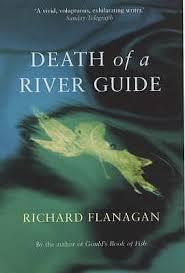
I just finished reading “Death of a River Guide” by Richard Flanagan, a Tasmanian author. At the risk of sounding a bit like an overzealous missionary, I have to stay that I was stunned, absolutely bowled over by the prose and the inventive story arc. In short, “Death of a River Guide” is one of the best novels I have ever read, over a period of nearly sixty years of reading novels.
On the face of it, the premise of the novel is strange, if not off-putting. We learn in the first chapter that the narrator is drowning. So how can an author sustain a story when we know that the protagonist will die? How can anyone weave such a beautiful, emotionally rich, beautifully descriptive story during the time that it takes a man to drown?
The answer, quite simply, is in the mesmerizing prose. Flanagan’s novels have been nominated for the Mann Booker Prize many times, and no wonder. His writing brought me to tears many times in the novel, and not always from its deep emotionality. The writing is so compelling, so evocative, so beautifully crafted, that I found myself highlighting passages and rereading them. Yes, my own novels have received lavish praise from readers, but reading the work of a true master was both humbling and inspirational.
Without giving away major elects of the story, the narrator, Aljaz, is a mixed-blood aboriginal who knows the river intimately, a sometimes angry, raging river within whose waters he drowns. Flanagan’s descriptions of the wild and unpredictable Tasmanian river sent chills down my spine. In his descriptions of the Tasmanian forests, I could smell, feel and see the tall stands of pine that Aljaz’s ancestors harvested. But it was Flanagan’s ability to reach deep into the soul of the characters that made me shake my head in wonder at how simple words, painstakingly crafted together by a master storyteller, could so thoroughly move me.
I intend to read other of Flanagan’s works. If you are looking for a wonderful read, I cannot recommend “Death of a River Guide” more highly.
June 15, 2014
A Lost Dynasty in Egypt?
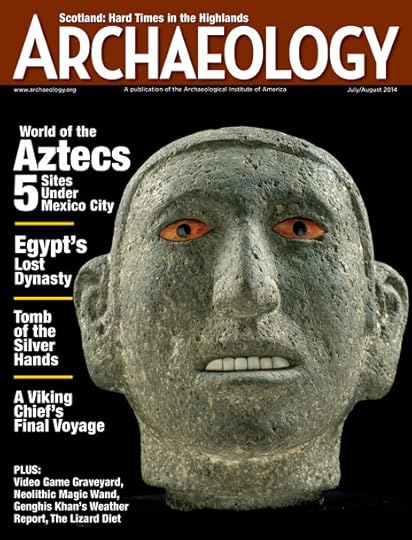
If you are interested in Ancient Egypt, you may want to check out the July/August, 2014 issue of Archaeology Magazine. “Egypt’s Forgotten Dynasty,” written by Mary Beth Griggs, describes recent digs at Abydos that have unearthed what some Egyptologists believe to be a short-lived dynasty that ruled between 1650 and 1600 B.C.
This dynasty came into existence during the Hyksos invasion and provided a buffer between their rule in the northern Delta region and the traditional 16th Dynasty that still maintained rule in the south. Since Abydos was one of the largest cities in Egypt at the time and an important religious site because it housed the Osiris cult, this dynasty may have arisen to protect the city and give it legitimacy.
In any event, the find is exciting. Digs at the site will continue and we can look forward to more information, and debate, coming from the archaeological team.
One of the take-away lessons from this report is that Egypt was a dynamic society, full of intrigue and drama. My upcoming novel, the third in my First Dynasty Series, describes one such dramatic period at the conclusion of that formative dynasty. The book will be out in the Fall. Stay tuned!
May 14, 2014
An Interview With Author Ed Hill

I first met Ed Hill when he was lecturing onboard a cruise ship in Alaska, dressed in his Royal Canadian Mounted Police red dress uniform with the high polished brown boots, leather belt and dress hat. With his gray hair, trim build and ramrod straight posture, he struck an imposing figure.
There were 200 or more of us gathered to hear a story from this masterful storyteller and everyone in the audience was spellbound. That was how our friendship began. I am proud to count Ed amongst my closest friends now, though we regrettably live more than 3,000 miles apart.
Ed Hill: Cop, Artist and Author
What prompts this blog is Ed’s new book, Busted. The master storyteller has penned a terrific memoir in short story format that recounts his adventures and misadventures as a Royal Canadian Mounted Police office for more than 30 years.
Friends or not, I can honestly say that this is a thoroughly enjoyable read, filled with Ed’s humor, life experiences and wisdom. Busted sits on my bedside table and I savor it every time I pick it up to read a chapter. It is unpretentious human interest at its finest, written by a man who has a unique perspective on people. He has never lost his enthusiasm or positivity.
Ed is also a well-known and highly respected Canadian fine artist, as you can see if you go to his art website. I was floored when I first saw his paintings. I think you will be, too.
The Interview
I thought you readers would be interested in what Ed has to say about writing Busted and also his take on the writing life.
You are a respected artist and a retired RCMP. What inspired you to write Busted? When my father died, so too his stories died with him, gone forever. He served for Canada in the Second World War, returned, got married and lived and supported a family of four kids. He had stories, believe me he had stories. However, he always refused or avoided writing them down or allowed them to be recorded in any way. At his death I felt a pang of anger or frustration in that fact. Three generations from now Francis Theodore Hill, my father, will be nothing more than a name on a genealogical chart. I promised myself I wouldn’t do that to my family and that year I started writing stories about my life, my work and our family adventures and experiences. In 2013 I had an opportunity to take just a few of those stories and incorporate them into a book called ‘BUSTED’.How has writing ‘Busted’ affected your everyday life? I am also a professional artist. I paint and reproduce my works in print editions, cards, etc. In writing this book I basically had to take the winter off from painting. That said, the artist within was still very much alive and active. The same artist that paints also writes. It’s just a different form of artistic expression. Now, instead of showing my work hung on walls, I attend readings and enjoy meeting the people who have read the short stories of my life.Do you write from an outline? Describe your writing modus. By the very nature of the book, I write from a base of memory. I write only true stories and frequently a memory or story of a time long ago will come to me. In a relatively urgent fashion I compile the story in my computer as best my memory can put it together. Then, I contact those who can help verify my memories of that particular incident or happening. Once that’s done, and I’m confident I’ve got all the detail available to me, I rework the initial story. I’ll rework the story time and again until I feel it’s done. That process is not unlike a painting that I’m working on. Somehow, and it only takes one final brush stroke, I just know when it’s done. Once completed I’ll quite often send the story I’ve written to those who I’d consulted. I’ll have them read and verify the story one final time and with their endorsement the story is filed into my family book. Many of my stories are the proverbial “stranger than fiction” so for me it’s important to verify the facts as a final process.How long did it take you to write ‘Busted’?With the above process as consideration, in effect the book “busted” was started in 1997 and finished in 2013 so it’s just about 16 years.Who are your favorite authors today?I read a variance of books and 95% if them are non-fiction. I read a lot of Canadian history, personal adventures and achievement. As such, I find I’m not focused on any one author. I suppose the only author that I’ve read a bit of in terms of more than one book was the Canadian author Farley Mowat. Before that, and the only time I’ve read any fiction to speak of, it was Joseph Wambaugh and his collection of American police stories.What advice would you give to aspiring authors?My advice to those who want to write is probably much the same as the advice I give to those who feel they want to paint. Have your tools out and ready. They have to be easily accessible as and when the urge comes. For painters I tell them to “Get your brushes wet!” For those wanting to write “Type a sentence! Type a paragraph!” Those small steps should serve to prime the pumps as it were. If you are meant to write, that one paragraph will be the start. You just won’t be able to leave it sitting there on the page screaming at you.Any other information you’d like to share with my readers?We all have personal stories. Whether you know it or not, you have stories that are significant, funny, spiritual or tragic. Your family, if nobody else, would appreciate knowing them. I gave no better gift in my lifetime than in 1998 when under the Christmas tree for my son and daughter there was a book, a collection of my stories with a promise. The promise was that I’d keep writing these stories as they came to me or as they happened. So too, if either of them had a family story they wanted me to write I would. That book since 1998 has grown. Each year there are more and more chapters added. Now, I have grandchildren who when visiting ask me to sit and read a chapter to them before bed. The only problem there is that I have to be careful which chapter I read. Some of my stories aren’t meant for young imaginations.
May 12, 2014
Lost Cities Found
As if 2014 isn’t already one of the most remarkable in archaeological history, with its incredible finds about Ancient Egypt, we now hear news from National Geographic that thousands of ancient villages and towns throughout the Middle East have been found using satellite imagery.
Some of the cities are huge by ancient standards, which goes to prove the point that fiction often predicts the future. By that I mean that we novelists often paint a picture of a society using our imaginations and those paintings turn out to be more like photographs.
As an example, take my novels The First Pharaoh and The Dagger of Isis (and the soon-to-be-released third novel in the series). In them I portray a vibrant Egypt (then called Kem or Kemet), trading far and wide with a host of small villages and towns along the Nile and beyond. Now we have proof that more than 15,000 such places existed in antiquity!
Keep those exciting finds coming, folks!
Beer in Ancient Egypt
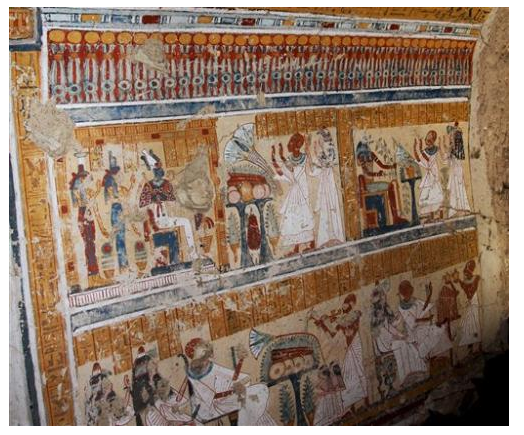
One of my favorite finds reported this year stems from a dig by Japanese archaeologists working near present-day Luxor. It turns out the elaborate tomb was for a beer maker who lived at the time of the Ramses kings.
To understand how important beer was to the ancients, take a close look at the paintings on the wall of the tomb. The artwork is magnificent, reflecting the esteem in which good beer makers were held. Fro0m such paintings we learn a great deal about daily life in ancient times.
In all of my First Dynasty Series novels, beer plays a role. Many a clandestine meeting was held over beer.
So, here’s to more finds by my Egyptologist mentors and friends! (Fade to picture of historical novelists hoisting a pint of Guinness).
May 7, 2014
Ancient Egyptians' Healthy Eye Makeup
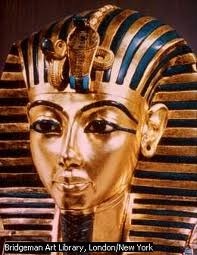
The incredible research findings about Ancient Egypt just keep coming. This week I saw a report by French chemists at the Université Pierre et Marie Curie in Paris, France. They reported that they analyzed samples of eye makeup worn in ancient times and found- SURPRISE!- that the eye makeup actually prevented diseases!
Previous concerns that the lead contained in the makeup that both men and women wore gave rise to health problems. Instead, the researchers found, the eye makeup contained such trace amounts of lead that it presented no health issues.
Quite the opposite; the scientists found that the makeup actually prevented eye diseases such as conjunctivitis that were common in the marshy areas of Lower Egypt. The chemicals boosted the body’s production of nitrous oxide, which is known to stimulate the immune system and fight infection. Pretty amazing?
Wait, there’s even more. The researchers found that from the amount of chemicals found in the samples they tested, it would have stimulated the body’s nitric oxide levels by 240%!
What caught my attention was this… it would have taken the ancients 30 or more days of difficult preparations to get that eye makeup mixture to give those results. That, according to the scientists, indicates to them that the Egyptians knew what they were doing and intentionally concentrated the healing properties of their products.
May 6, 2014
I Completed Draft One!
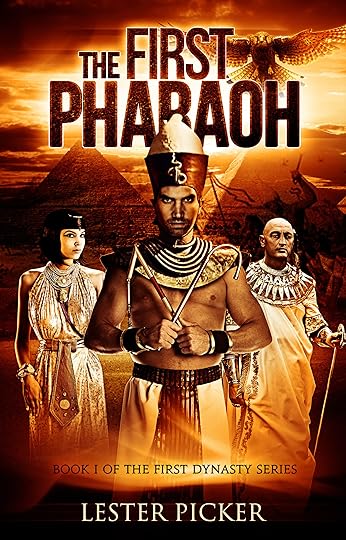
I’m happy to report to readers of my First Dynasty Series that I just completed the initial full draft of the third and final novel.
Few things can be as satisfying to an author, or at least to me, than finishing the first cut. We struggle for words, plot lines, character twists, real life interfering with our writing schedules… the list continues. But, then again, so does the writing.
I’m also happy to report that I beat my self-imposed deadline of June 30 for Draft #1. That means I will have a bit more time to polish the manuscript as I typically take it through at least 3 more drafts before I consider it ready for prime time. I know that I write more slowly than many other authors, but I have to feel confident in the final story. If I can’t love the work, then I don’t want it “out there.” Judging from the 4- and 5-star reviews, I do know that most of you enjoyed The First Pharaoh and The Dagger of Isis.
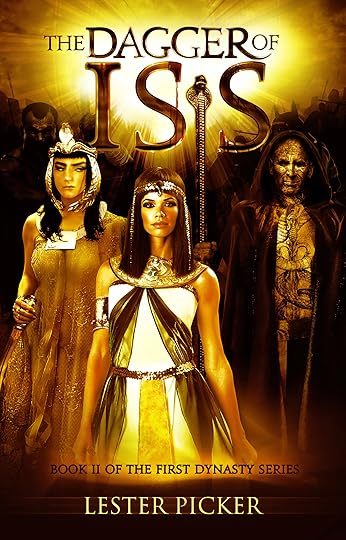
I plan to spend a good part of the summer revising, so that the book is available in hard copy and e-book this Fall. I’ll keep you posted on progress as I go along. BTW, the novel concerns itself with the last King of the First Dynasty and the ascension of the first King of the Second Dynasty, a period filled with transitions, upheavals and more. I hope I’ve woven together a great story, but it is you, loyal readers, who will ultimately decide. I’m looking forward to your reactions.
May 4, 2014
3-D Ancient Egyptian Artifacts!
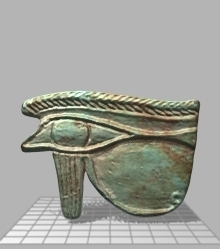
Like I said in my last post, 2014 is already one exciting year for aficionados of Ancient Egypt. The Petrie Museum of University College in London has just released a set of objects in their collection that have been scanned in incredible detail in 3-D.
You can imagine how thrilled I am as an author of Ancient Egyptian fiction. This allows me to grab an object and rotate it in space to get a feel for the item so I can describe it as appropriate. The 3-D scans are in the Beta stage right now and there are only a limited number of objects available, but I look forward to a growing number of artifacts being made available to all of us who are fascinated with this great civilization.
Here is a screen shot of a sample artifact that I rotated.
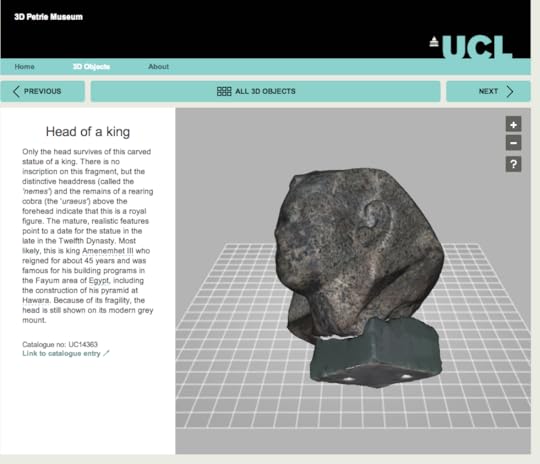
Congrats to Petrie Museum. If you’d like to see these objects for yourself, click here.
May 2, 2014
Some Amazing Findings About Ancient Egypt

Well, 2014 started out with a bang as far as Egyptian archaeology goes. Recent finds by that rare breed of Homo sapiens known as Egyptologists are giving us more information about the Ancient Egyptian people, as well as how they accomplished some of their amazing feats.
Mummies and Tombs

Case in point is the recent discovery of a previously unknown tomb in the Valley of the Kings near Luxor that contains the mummified remains of several nobles, including infants, who were part of the Royal Court around the 14th century BC. The tomb has been significantly looted during antiquity, first for the gold and jewels they contained, and in more recent times by those seeking any antiquities of value to sell on the black market.
Archaeologists hope that the finds will provide some insights into life within the Royal Court. Even though the period in question is some 1,500 years after the period I write about in my First Dynasty trilogy, it’s still exciting for me when these finds fill in gaps in our knowledge. If you want to read more on the find and see some pictures, try here.
The Pyramids…again!
For more than a thousand years now, people have wondered how in the world the ancients were able to build the Pyramids at Giza. I have stood at the base of the Pyramids several times myself and wondered the same thing. 1.3 million blocks that weigh from two to 15 tons each, transported from hundreds of miles in the south, fitting together within 1/32 of an inch. Row upon row, course upon course to an apex that is 488 feet high!
Theories range from alien transport to pulleys and levers to massive sand ramps. Now a group of Dutch scientists believe that the stones were able to be dragged on sledges by wetting the sand in front of the sledge. Makes for interesting reading.
February 14, 2014
Please Help... I Need Some Advice
Please Help… I Need Some Advice
Honestly, I’m looking for some advice. For those of you who are fans of my writing, I thank you and am very grateful. I feel blessed to have you on board.
And for those of you who have offered constructive critique - misspelled words or an error here and there- I doubly thank you. Your efforts have strengthened my storytelling.
But what is an author to do when someone writes in a review something that they are entirely wrong about? That is were I need advice.
Case in point. In a recent review of The First Pharaoh, the reviewer makes some solid, critical points. Hey, I accept that. No book, no matter how well written, is for everyone. But then the reviewer goes on to say that I made a historical error in describing King Narmer’s wife’s negative reaction to him taking a Second Wife. It was common practice back then, she said in her review, and even multiple concubines was common practice, so the Queen’s reaction was overboard and historically inaccurate.
Excuse me? This reviewer is dead wrong! What she is describing is an Ancient Egypt far later than Narmer’s time. The fact is that we know precious little about the First Dynasty and we have absolutely no reason to believe that even a Second Wife was a common occurrence at that time, let alone concubines servicing the King. This is backed by original source materials by such current notable Egyptologists as Dr. Toby Wilkinson of Cambridge University and Dr. Gunther Dryer of the German Archaeological Institute, both specialists in the earliest Dynasties and both my mentors for the historical accuracy of my books.
Egypt was not a static culture and many of their traditions developed slowly over time. While once adopted they were slow to change, but they did, in fact, change. The difficulty arises when people take a static snapshot of Ancient Egypt, mostly because their reading focuses on the later Dynasties, but then erroneously extrapolate that knowledge to the entire 3,000-plus year span of Dynastic rule.
So my questions to you readers go like this:
How do you feel an author should respond to such errors by a reviewer? Do I keep silent or respond in print? Assuming my tone is respectful and not argumentative, does responding accomplish anything? Does it make the author look petty and/or defensive?
Like I said at the top, I would sincerely appreciate your input. How should an author respond, if at all? And, thanks in advance.



